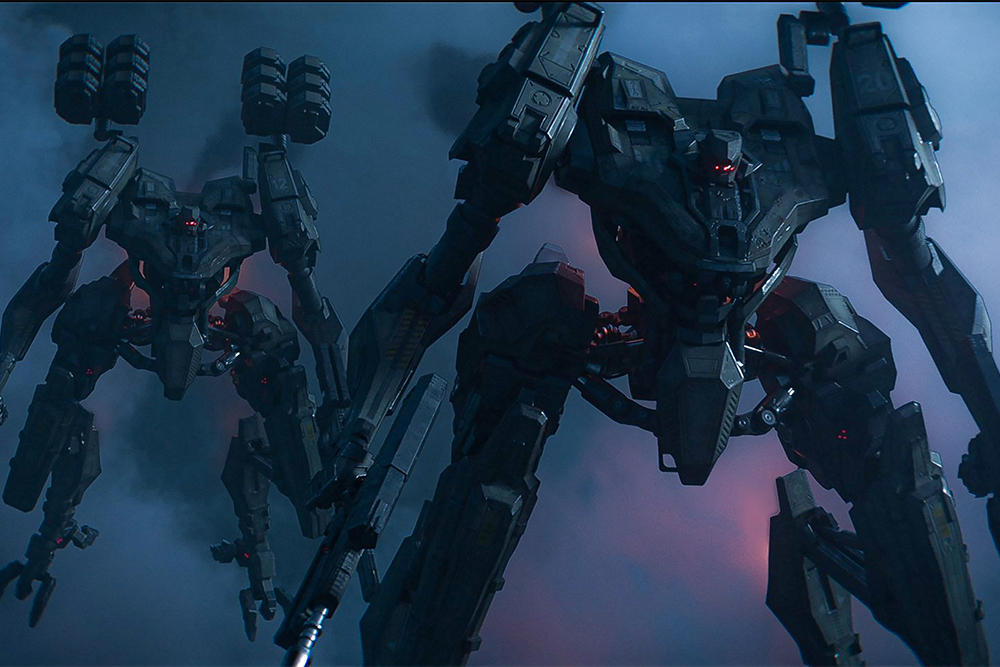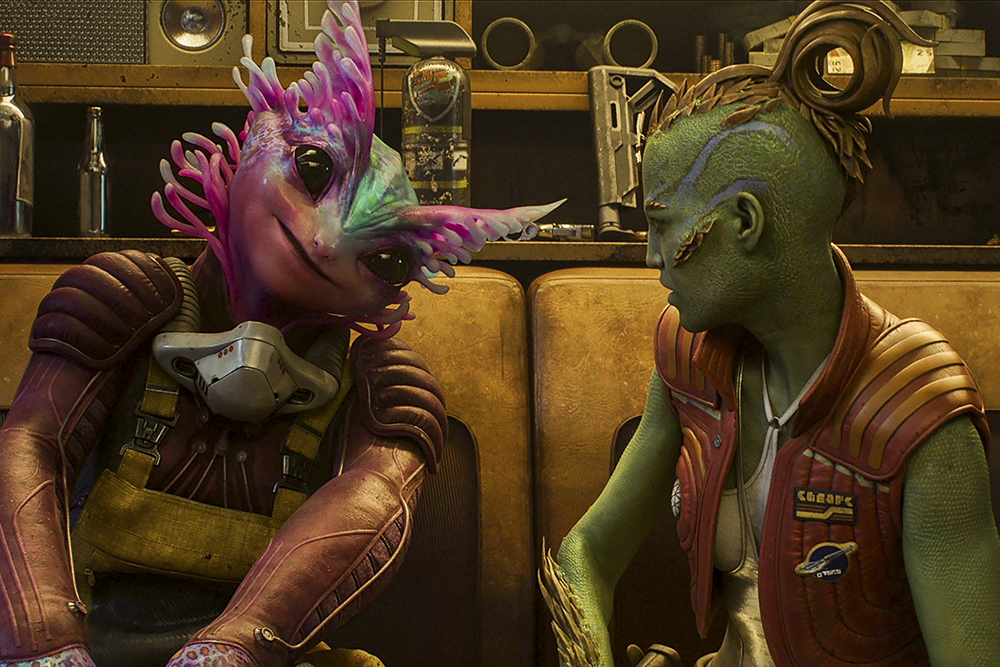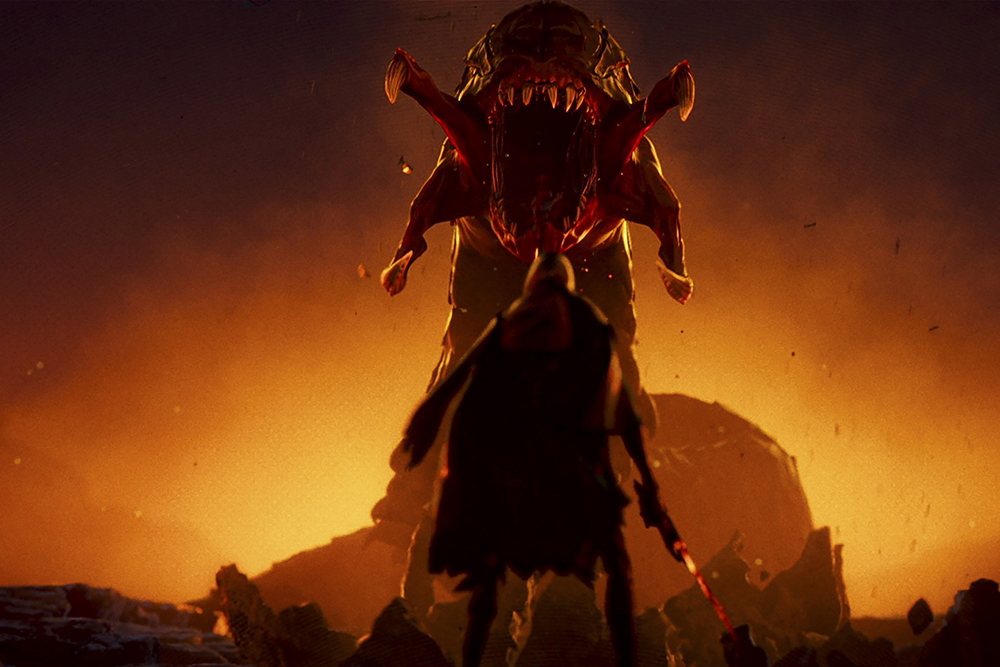Prime-Video - Secret Level Season 1: A bold attempt at video game anthology, marred by uneven execution
By Mulder, 07 december 2024

Secret Level is a highly ambitious animated anthology series that strives to adapt some of the most beloved and obscure titles in the world of video games into short, captivating narratives. Directed by Tim Miller, the creator of Love, Death + Robots, and supported by an impressive array of animation studios, the series attempts to capture the magic of interactive storytelling and translate it into visually arresting stand-alone episodes. With 15 episodes inspired by a wide variety of games, from classics like Dungeons & Dragons and Warhammer 40,000 to lesser-known or even defunct titles like Concord and Crossfire, Secret Level embraces its format to offer a buffet of cinematic gaming experiences. However, while its aspirations are laudable, the series often suffers from an incoherent narrative, an over-reliance on nostalgia and an uneven mix of visual styles that sometimes dilute its impact.
At its core, the Secret Level animated series is a celebration of video games as a medium, with each episode functioning as a visual love letter to the unique worlds and characters that games have introduced over the years. From the photorealistic intensity of Warhammer 40,000: And They Shall Know No Fear to the stylized, almost playful aesthetic of Sifu: It Takes a Life , the series showcases an impressive range of animation techniques. The involvement of studios such as Blur Studio, Platige Image and Unit Image guarantees a high level of quality, making Secret Level a feast for the eyes. Vibrant cel-shading in episodes such as Sifu and Mega Man: Start offer a welcome respite from the dominant hyperrealism that characterizes most of the series. However, the emphasis on photorealistic visuals, while technically accomplished, sometimes detracts from the narrative, with some episodes falling into the valley of the uncanny or coming across as visually monotonous.

The anthology format is both a strength and a weakness of this new animated series. By design, each episode is self-contained, allowing the series to explore different genres, tones and narrative styles. This episodic freedom gives rise to moments of brilliance, such as in The Outer Worlds: The Company We Keep, a poignant and darkly humorous tale of unrequited love set against a backdrop of corporate exploitation. Similarly, New World: The Once and Future King combines comedy, action and existential reflection in a well-crafted tale that features Arnold Schwarzenegger in a rare voice-acting role as the flawed yet endearing King Aelstron. These episodes stand out not only for their narrative cohesion, but also for their ability to evoke the emotional resonance that video game fans often associate with their favorite titles.
However, this episodic approach also reveals the uneven quality of the series. Several episodes seem underdeveloped, privileging visual spectacle over narrative. The episodes Exodus: Odyssey and Concord: Tale of the Implacable are perfect examples, offering little more than extended trailers for their respective games, with sloppy storytelling and superficial character development. Crossfire: Good Conflict and Unreal Tournament: Xan suffer from similar problems, presenting action-packed but thematically superficial stories that fail to leave a lasting impression. For an anthology rooted in the rich narrative potential of video games, these entries are missed opportunities to delve deeper into the worlds they represent.

One of the most controversial aspects of Secret Level is its reliance on gaming nostalgia. While long-time fans of the franchises concerned will appreciate the detailed references and Easter eggs scattered throughout the series, newcomers are likely to be turned off by stories that assume prior knowledge of the games. Episodes such as Honor of Kings: The Way of All Things” and PAC-MAN: Circle manage to strike a balance between accessibility and homage, creating engaging stories even for viewers unfamiliar with the source material. However, other episodes, such as Playtime: Fulfillment, rely heavily on nostalgic callbacks, culminating in a finale that feels more like a corporate commercial than a satisfying conclusion.
Despite its flaws, the Secret Level anilmation series offers moments of genuine innovation that demonstrate the potential of its format. PAC-MAN: Circle is a striking example, reimagining the iconic arcade game into a grotesque tale of survival and horror that subverts expectations and leaves a lasting impact. Similarly, Sifu: It Takes a Life captures the essence of its source material with frenetic action sequences and a poignant exploration of revenge and resilience. These episodes, along with others such as Spelunky: Tally , highlight the unique possibilities of adapting video games into short-form animation, offering a glimpse of what Secret Level could achieve with more consistent execution.

One of the series' greatest challenges lies in its thematic ambitions. While some episodes tackle complex ideas with finesse, others struggle to move beyond superficial exploration. The episode Unreal Tournament: Xan, for example, hints at themes of rebellion and existentialism but fails to develop them in any meaningful way, while Crossfire: Good Conflict offers a simplistic depiction of war that lacks emotional depth. By contrast, episodes such as The Outer Worlds: The Company We Keep and Honor of Kings: The Way of All Things succeed in weaving nuanced narratives that resonate on both an emotional and intellectual level.
The decision to include games with varying levels of cultural recognition adds another layer of complexity to the series. While episodes based on popular titles like Warhammer 40,000 and Dungeons & Dragons benefit from the familiarity of their source material, others, like Concord and Exodus, struggle to connect with viewers unfamiliar with their universe. The inclusion of defunct or unreleased games further complicates matters, with episodes like Concord: Tale of the Implacable feeling out of touch with the gaming zeitgeist.

Despite its flaws, Secret Level's first season deserves praise for its ambition and creativity. The series represents a bold attempt to bridge the gap between gaming and animation, offering a storytelling platform that celebrates the art of both mediums. Although its execution is uneven, the moments of brilliance scattered throughout the series hint at its potential to become a groundbreaking anthology with more refinement. With a more thoughtful selection of source material, greater stylistic diversity and a stronger emphasis on narrative depth, future seasons could elevate Secret Level to the level of its spiritual predecessor, Love, Death + Robots.
The first season of Secret Level establishes itself as a visually stunning but narratively incoherent anthology aimed primarily at video game enthusiasts. For fans of the games it adapts, the series offers a nostalgic and often thrilling journey into familiar worlds. For newcomers, it provides an intriguing, if uneven, introduction to the narrative potential of the games. Even if it doesn't fully realize its ambitious vision, Secret Level lays a promising foundation for what could become a landmark series in the evolving landscape of video game adaptations.

Synopsis:
Each episode of Secret Level serves as a gateway to a new adventure, unveiling exciting worlds from beloved classic video games and eagerly-awaited new titles.
Secret Level
Created by Tim Miller
Directed by Dave Wilson, Dominique Boidin, Léon Bérelle, Rémi Kozyra, Maxime Luère
Written by Brooke Bolander, K.D. Dávila, Jeff Juhasz, Omer Levin Menekse
Producer : Samantha Finkler Brainerd, Victoria L. Howard, Mike Rosemeyer
Voices of Arnold Schwarzenegger, Patrick Schwarzenegger, Kevin Hart, Laura Bailey, Heaven Hart, Keanu Reeves, Gabriel Luna, Ariana Greenblatt, Adewale Akinnuoye-Agbaje, Michael Beach, Emily Swallow, Claudia Doumit, Aidan Bristow, Temuera Morrison, Emily Swallow, Clive Standen, Ricky Whittle, Merle Dandridge, Gabriel Luna
Executive producers : Tim Miller, Dave Wilson,Jennifer Miller, Nan Morales, J.T. Petty
Production companies : Blur Studio, Amazon MGM Studios
Network : Amazon Prime Video
Photos : Copyright AMazon MGM Studios

